Cédric Saleck and his wife, Céline, live in Logonna-Daoulas, a village set in the center of a 5-mile-long peninsula surrounded by the waters of France’s Bay of Brest. So, it’s no surprise that the couple has accumulated a small fleet of boats. They have a 29′ sloop-rigged cruiser, a 12′ fiberglass sailing dinghy, two double kayaks, and a 15′ fishing dinghy, but still, something was missing. What they longed for was a pénichette—literally a “little barge” that could be, as Cédric called it, their “floating hut.” A search of the web turned up a lot of boats that could work as a comfortable retreat—after all, France is laced with canals and boats designed for leisurely travel on them. But everything his web search turned up was either too big and expensive or just ugly.
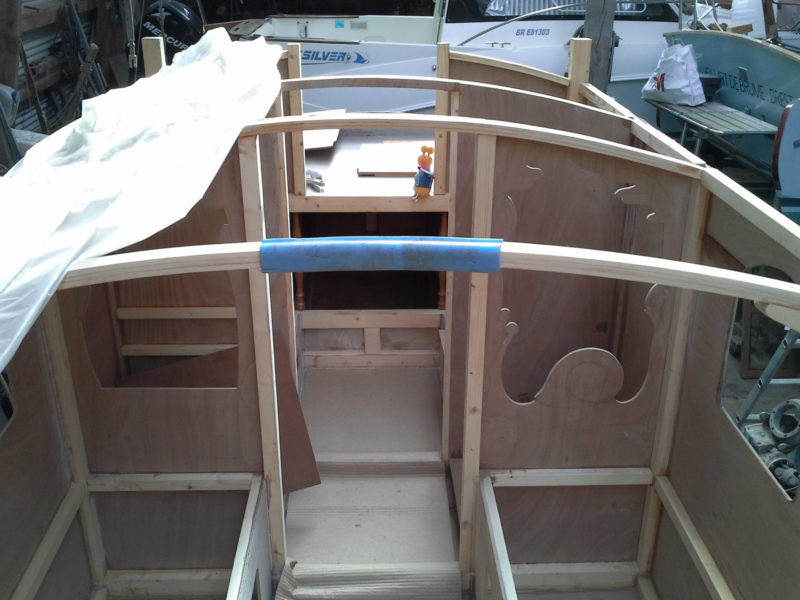 Photographs by and courtesy of Cédric Saleck.
Photographs by and courtesy of Cédric Saleck.While the openings in the bulkheads seen here are not in the original design, they give the cabin a more spacious feeling and will improve the circulation of heat from the woodstove. The blue foam padding that’s wrapped around the arched roof beam will come off when the roof goes on but perhaps not before the occupants learn to duck when passing through the cabin.
He happened upon the Escargot canal cruiser, designed by the late Phil Thiel, half a world away in Seattle. The Washington State city is an unlikely place to give rise to a canal boat. While it does have what is called The Ship Canal, the waterway is scarcely 3 miles long and is mostly a stream bed made navigable in 1917 by a dam and a pair of locks. The two parts that actually look like a canal have a combined length of just under 1 mile. Phil got his inspiration for the Escargot from the boats plying the canals of France where he spent many of his summers. The name of his cruiser, Escargot, is the French word for snail, both a nod to the origin of the design and a declaration of the pace he intended for the boat’s barge-like hull.
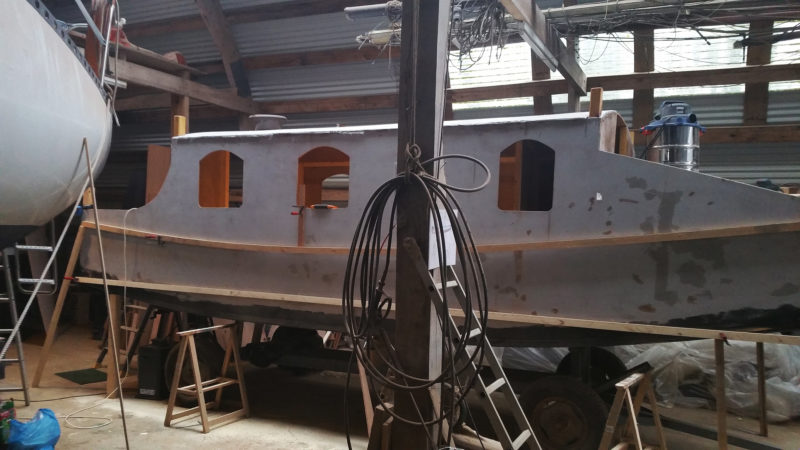
The curve of the sheer guard is decorative; each side of the hull and the cabin is one flat, straight piece.
Cédric thought the Escargot, at 18′6″ by 6′, was just about the right size, and found the decidedly uncomplicated hull and cabin to be beautiful. His exploration of the Escargot led him to his “favorite example,” BONZO, the Escargot built in 2009 by Nate Cunningham, the son of the Small Boats editor.
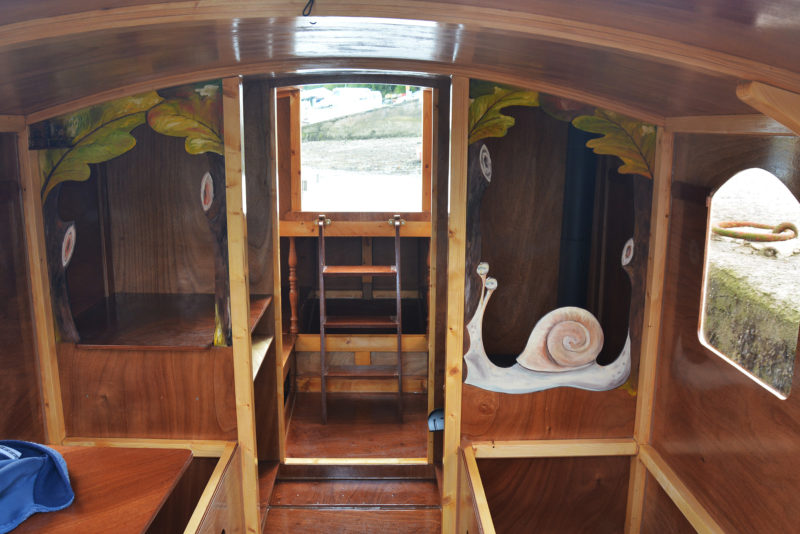
The design of the bulkhead cutouts became clear when they were painted with a snail wandering in the woods. The short ladder leads up to the foredeck.
Thiel designed the boat for construction by novices. There are only three functional curves in the boat, and the two on either end of the flat section of the bottom are invisible. The curve of cabin roof stands alone and yet gives the little cruiser its charm. The simplicity of the design invites making modifications to suit personal preferences. BONZO was built with a few departures, most notably by raising the cabin roof 6″ for more headroom and an airier feel in the cabin and extending the cockpit by 12″ for more elbowroom.
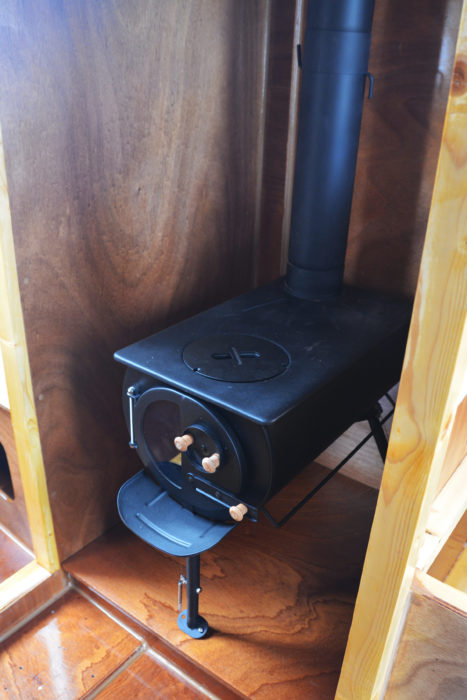
During the winter, a woodstove makes CARACOLE a comfortable retreat whether or not she leaves the dock.
Cédric began construction in October 2018 and followed BONZO’s lead, making the side panels and the bulkheads taller to raise the cabin roof, but beyond that, he wanted his Escargot to be uniquely his own. He built the boat with sapele plywood and intended to finish the interior bright for a warm, elegant cabin. For the accommodations, Cédric built in a sofa bed, a movable dining table, a woodstove to starboard for heat, a gas stove to port for cooking, and storage compartments forward.
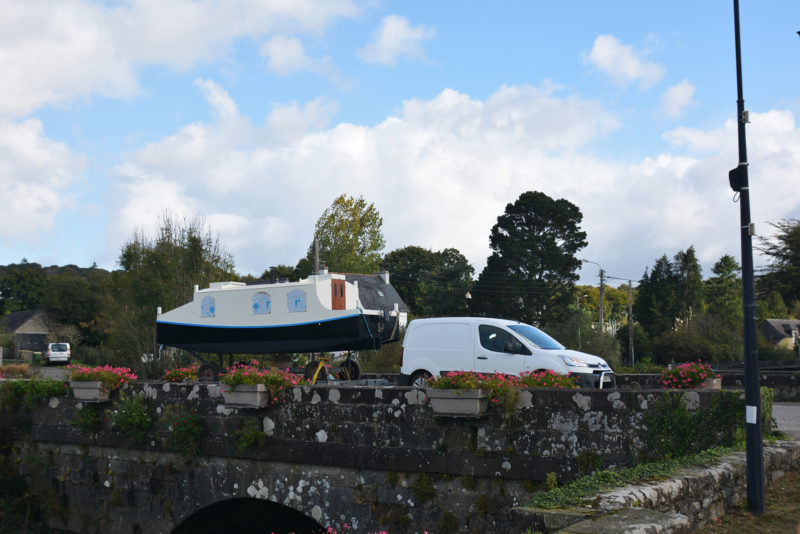
If CARACOLE looks like she’s riding rather high, she’s perched on a boatyard dolly, which is strapped to a flatbed trailer.
The original design called for two Sea Cycle pedal-powered drives to be installed in wells in the cockpit, but that recommendation was omitted from more recent versions of the plans. Thiel realized that the Sea Cycle propellers were designed for a light, fast catamaran and were ill-suited for pushing a barge hull that would weigh a half-ton with just two people aboard the bare boat. Cédric liked the idea of the pedal drives but recognized that using his Escargot in the open waters and strong currents of the Bay of Brest that surrounded his hometown would require more power for safe operation. He opted for a 5-hp outboard. Sculling over the stern has long been popular among Bretons, so a sculling oar is his auxiliary power.
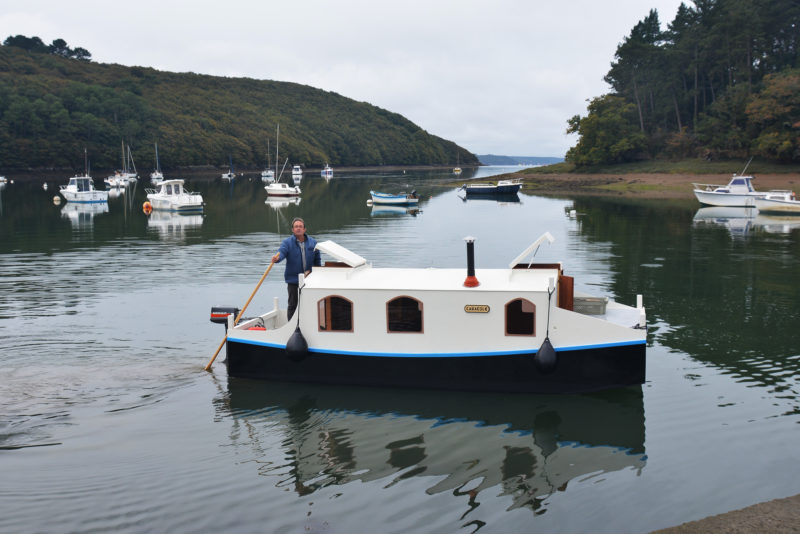
Bretons take their sculling seriously so Cédric made that his auxiliary means of propulsion.
Cédric thought he would need only one winter to build the large box that the Escargot appears to be, but he didn’t finish and launch until September 2020. He and Céline christened the boat CARACOLE, short for the Spanish name for a sea snail—caracole de mar.
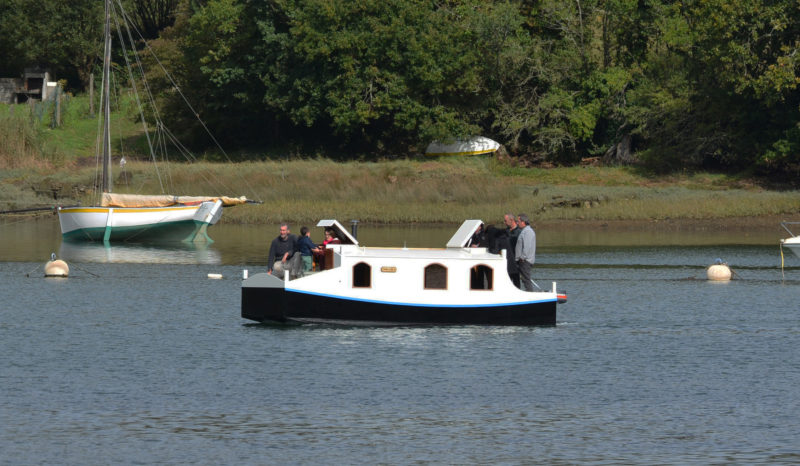
CARACOLE has plenty of room to take guests out for an afternoon tour.
They quickly learned that their Escargot isn’t fond of struggling to get anywhere when the sea kicks up a chop, but just as quickly discovered the pleasure their boat provides by just being somewhere. “It’s such a pleasure to spend a night aground in a mudflat in winter. The Escargot Canal Cruiser became our winter hut in quiet weather, even if it’s a bit cold.” That’s just what Phil Thiel had in mind; the only thing better than boating at a snail’s pace is getting aboard and going nowhere. ![]()
Do you have a boat with an interesting story? Please email us. We’d like to hear about it and share it with other Small Boats Magazine readers.
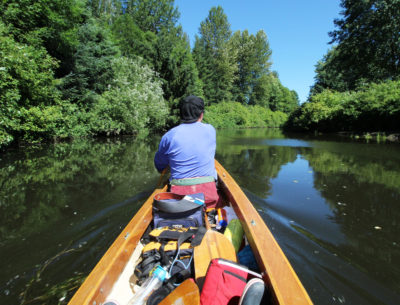

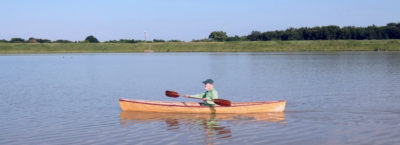
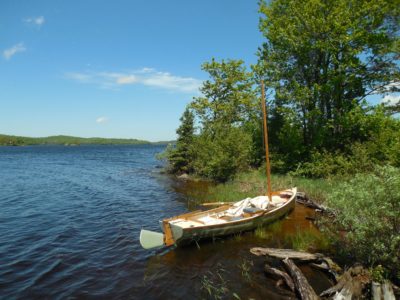
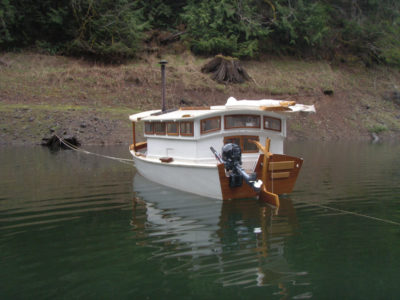


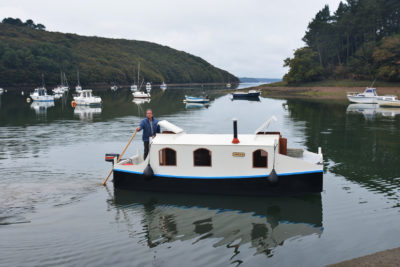
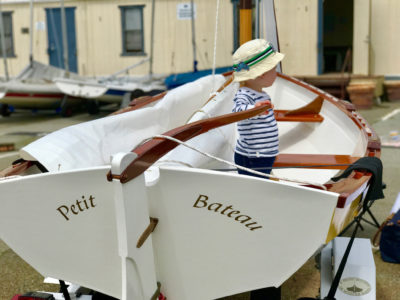
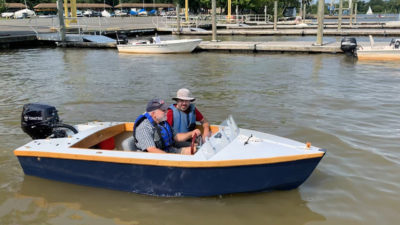
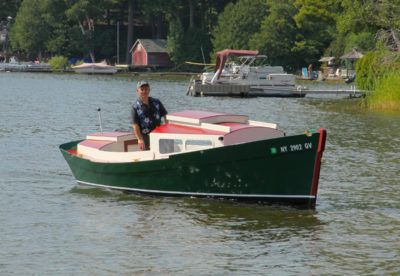
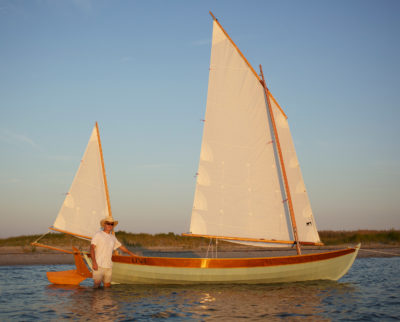
I want one!
Now that is thinking “inside the box” in the best possible way. This boat is so unique and charming. I think I would like one of these, because spending a weekend on the water in quiet contemplation is what appeals to me most, whether going at a snail’s pace, or standing still on the water enjoying nature.
I love the boat. I am doing something similar and plan to cruise our canal system in Ontario Canada.
A link to your site, your blog?
Phil has an informative “Phil Boyer” YouTube channel that has a lot of information about his latest project.
The finish on the plywood is beautiful. I would be concerned about the finish around the wood stove. It’s very close quarters there and after a few cold nights one might notice some damage from the heat, even on the deck. Some light gauge sheet metal mounted on spacers would create a barrier and also create some air flow. A snail with blisters is no fun.
The surfaces surrounding a wood stove do indeed get hot. BONZO’s wood stove has a piece of corrugated steel about 18″ high around the stove. Its bottom edge is elevated to provide for the flow of air behind the steel and it’s set 3/4″ off from the plywood. I have steel between the wood stove and the walls windows of HESPERIA too. The heat warped the 1/4″ plexiglass before I made a shield for them.
Some ceramic tiles might be a nice touch
Congratulations on a beautiful boat. I know what you mean about the time it takes to build even a simple boat – my Escargot, NUTSHELL, took over a year of part-time work. I’m glad you added the extra headroom as I did the same and find it just right. Well done, and may you have many years to enjoy her!
Brent
Tasmania, Australia
What’s the Bahamian sloop boat in the background on the mud?